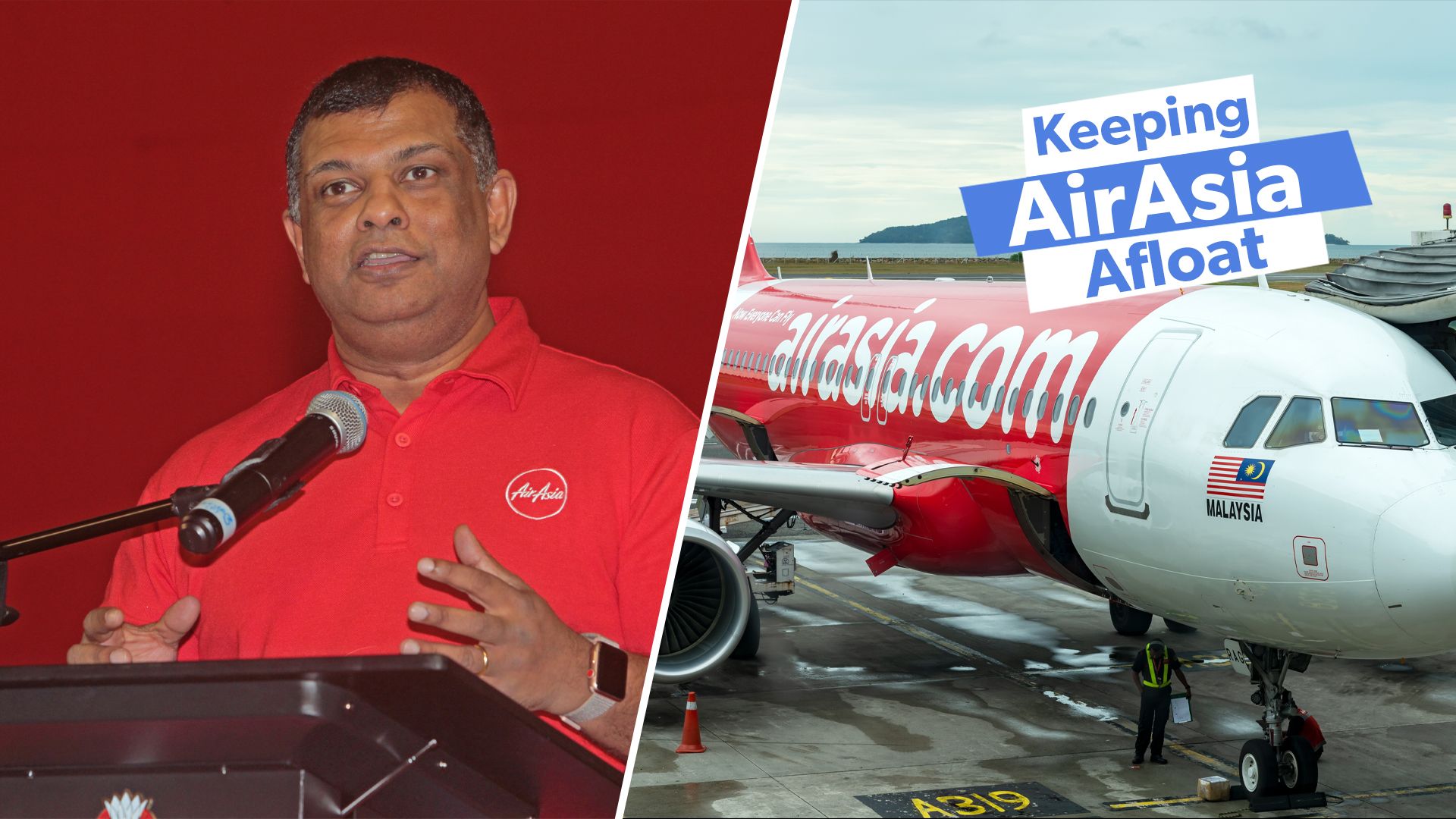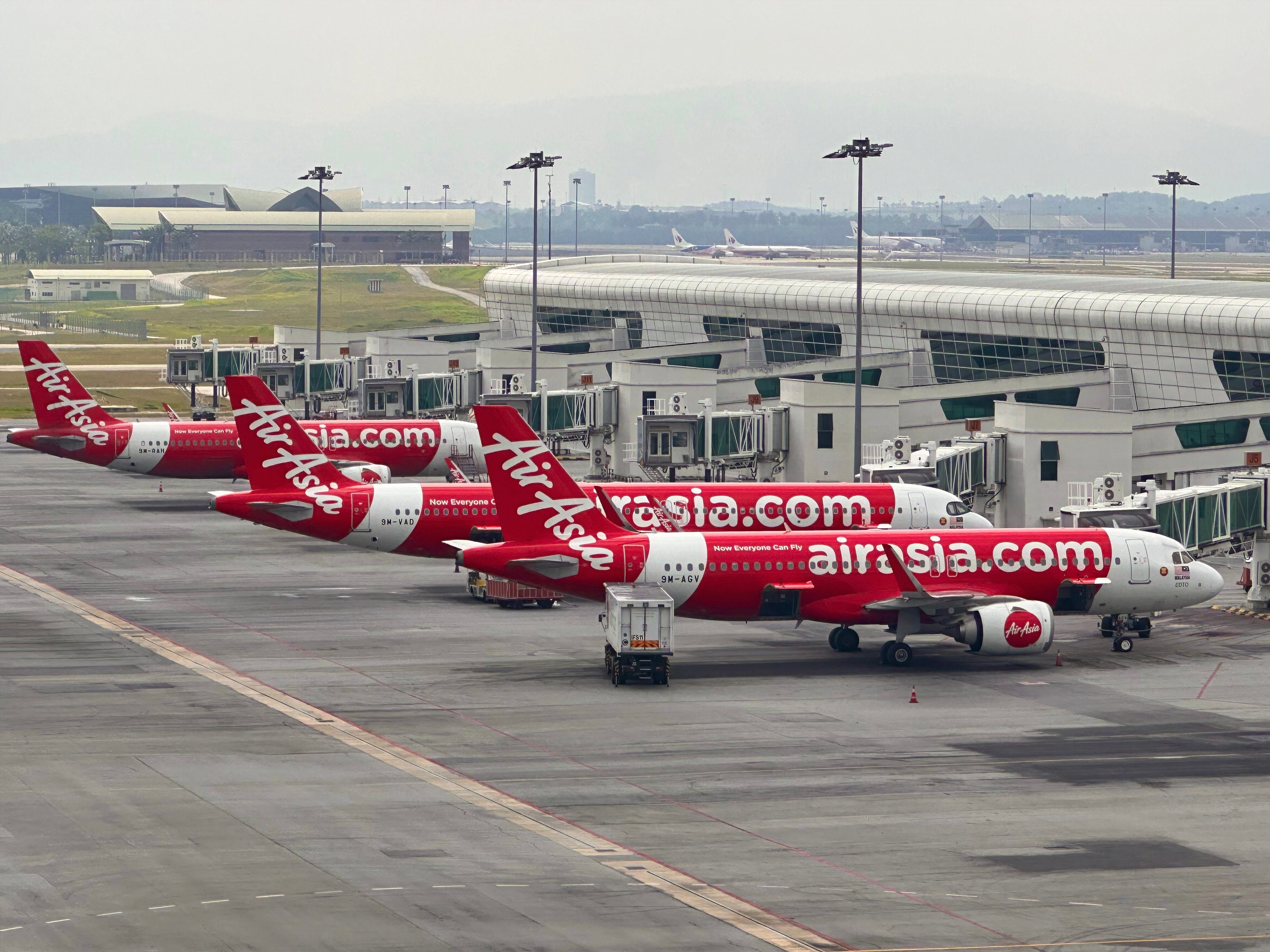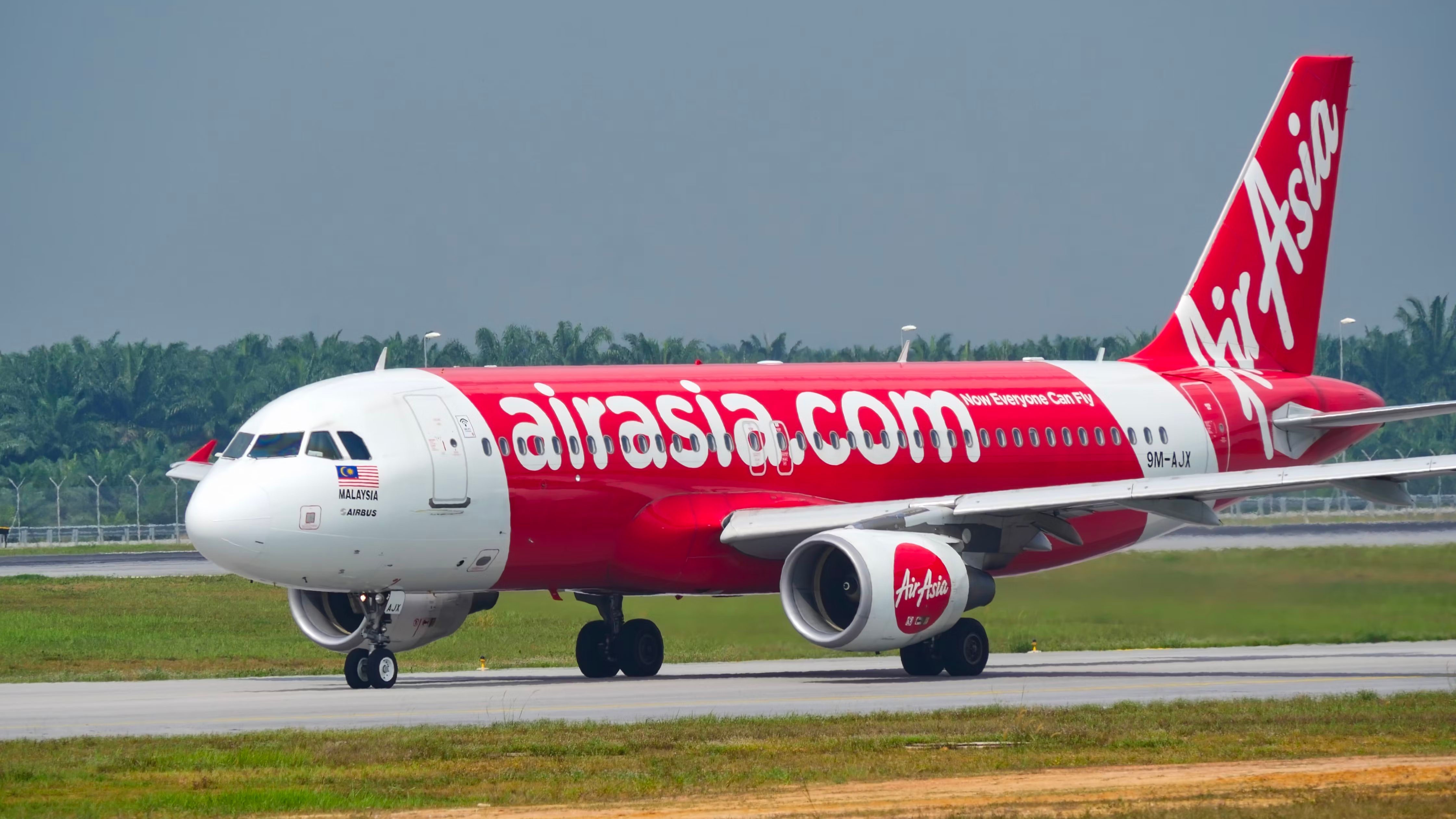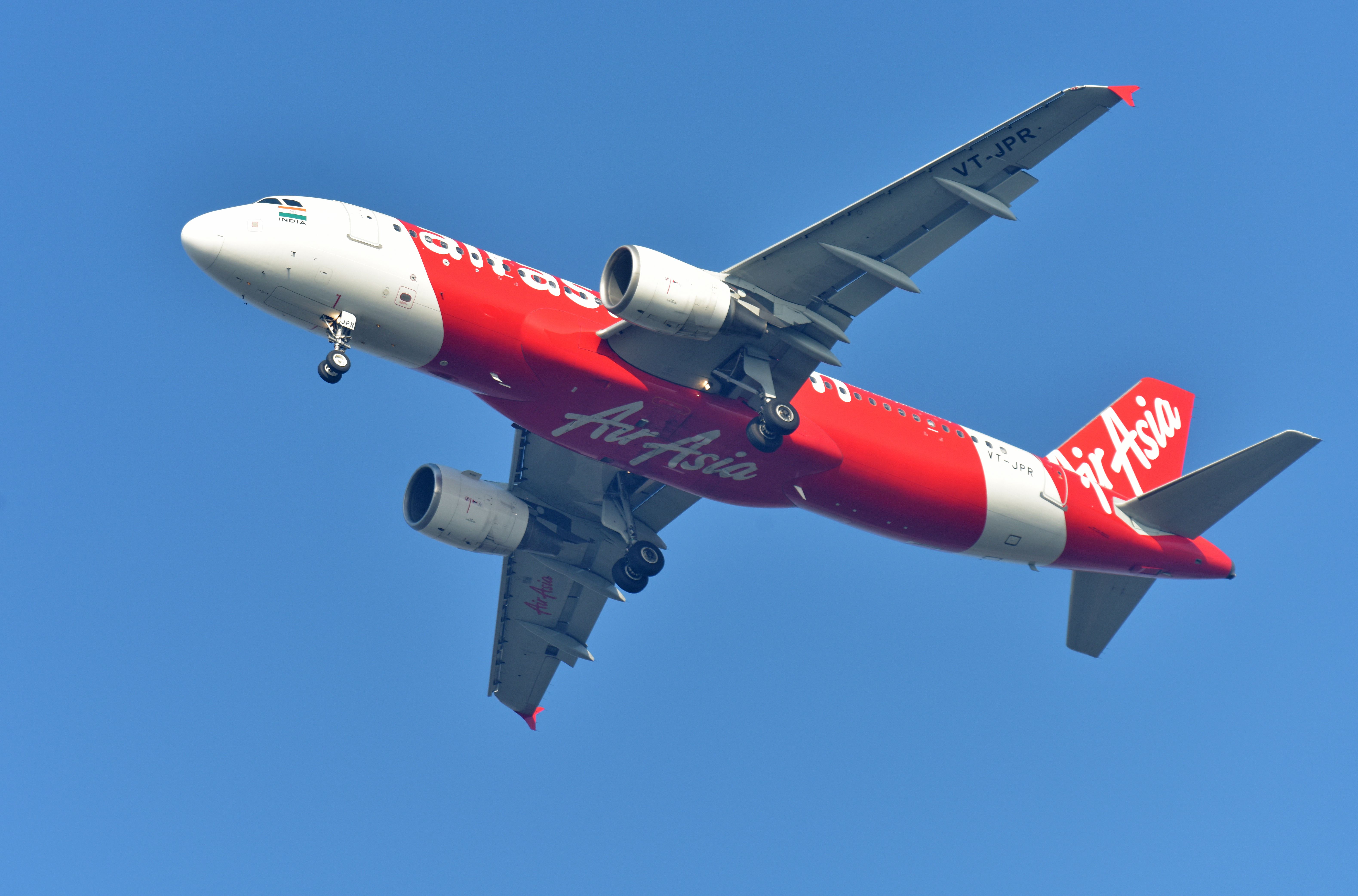AirAsia today stands out as the poster child of low-cost aviation in Southeast Asia and has been described by industry observers throughout the years as one of the true pioneers of budget flying in Asia, as well as the first carrier to truly succeed with the model. Behind the experienced leadership of CEO Tony Fernandes, who remains at the company’s helm today, AirAsia was able to grow into what is today the largest airline in Malaysia, operating an impressive fleet of over 250 aircraft and serving over 160 destinations in 25 countries.
In 2024, AirAsia
has subsidiaries across the region, many of which have been successful and recognized for their high quality of service for a low-cost carrier. According to the carrier, Skytrax has consistently rated AirAsia as the world’s best low-cost carrier, having given it this award for fifteen consecutive years.
Photo: Feeqazmir | Shutterstock
Despite what seems like decades of success, AirAsia’s foundation and early years were not nearly as glamorous, and back in 2001, the carrier’s existence was hanging by a thread amid extensive financial difficulties. It was at this time that the legendary CEO, Tony Fernandes, took over the company and capitalized on novel management and expansion strategies that helped completely turn around the airline’s fortunes. Let’s take a deeper look at the changes Fernandes made to help turn AirAsia into the successful airline it is today.
Foundations, early difficulties, and Fernandes’ takeover
AirAsia was launched in December 1993 by DRB-Hicom, a conglomerate owned fully by the Malaysian government, which sought to establish a new full-service airline that would connect a hub in Kuala Lumpur to the rest of the region. When the carrier commenced operations 27 years ago on November 18th, 1996, the airline decided to pursue a full-service network carrier strategy, with a traditional route network, premium products, and much more.
However, this strategy did not yield the financial returns that the conglomerate was hoping for. Throughout the latter half of the 1990s, AirAsia lost millions and attempted multiple times to launch new routes to better compete with other regional players. Nonetheless, profits remained negative even when passenger load factors began to rise, likely as a result of lower ticket prices being offered to incentivize passengers.
By the time 2001 came around, the airline had failed to turn profitable and had amassed approximately $11 million in debts. However, the airline did have one thing on its side, as Mukund Dixit and Sanjay Jena’s 2022 book AirAsia Malaysia 2001 is quick to point out:
“Despite its weak financial performance, AAB had maintained its record of safety. It had not met with any accidents since it had started its operations in 1996.”
By 2001, the airline’s government owners wanted to get rid of what it saw as a failing carrier that did not have a pathway forward. It was at this time that the airline drew the attention of Tony Fernandes, a former Time Warner executive whose management organization, the Tune Group, owned companies across the travel, tourism, and entertainment spaces.
To Fernandes, AirAsia had the correct physical infrastructure to succeed, including modern aircraft and a spotless safety record. Where the carrier had failed, however, was to identify a strategy that could appropriately use these assets to turn a profit. With a plan in mind to turn the airline around, Fernandes’ company purchased the struggling airline for the symbolic price of a single Malaysian Ringgit, worth around a quarter at the time.
Turnaround, transformation, and takeoff
Tony Fernandes was not a newcomer to the world of low-cost airlines. In their 2016 book The Global Commercial Aviation Industry, Soren Eriksson and Harm-Jan Steenhuis cite him as a major influence on Michael O’Leary, the founder of Ryanair, who modeled the carrier mostly on Southwest Airlines. Fernandes immediately recognized the challenges that were plaguing AirAsia, identifying the root of the company’s difficulties in a fundamental misunderstanding of who its core customer was.
AirAsia had, for the five years since its 1996 founding, attempted to entice passengers by offering lower prices than competing legacy carriers across the region. This strategy worked in the United States (in the case of airlines like Southwest) as well as in Europe (as was the case with Ryanair), but there were fundamental differences in how the market was structured in Southeast Asia that made this a failing strategy.
Photo: Jaggat Rashidi I Shutterstock
While airlines in the United States have gained a reputation for offering low-quality services (and those in Europe for being a bit above average), the airlines in Southeast Asia with which AirAsia competed were some of the world’s most highly-rated. Passengers might be willing to switch from United to Southwest for a 25% fare discount, but asking passengers to forgo Singapore Airlines and Cathay Pacific for AirAsia at that discount proved unpopular.
It is with this in mind that Fernandes restructured AirAsia around the idea of targeting customers who had never flown before. In 2001, estimates indicated that only around 6% of Malaysians had ever been onboard a commercial aircraft. Fernandes saw this as an opportunity and organized his carrier around these passengers, launching subsidiaries and new routes in regions that had previously been devoid of air service. Today, the company’s subsidiaries include all the following carriers:
- AirAsia Cambodia
- AirAsia India
- AirAsia Japan
- AirAsia X
- Indonesia AirAsia
- Indonesia AirAsia X
- Philippines AirAsia
- Thai AirAsia
- Thai AirAsia X
AirAsia would soon become one of the first airlines to aggressively market and sell tickets via social media. Furthermore, Fernandes would follow a Ryanair-esque strategy of fleet commonality, quickly creating a uniform fleet of Airbus A320 family jets. He also rigorously scheduled flights around the clock, posting aircraft utilization rates that would match those of even the most efficient European budget airlines. The carrier’s near-perfect safety record stays intact, with no fatal accidents or hull-loss incidents on record.
Photo: NareshSharma | Shutterstock
His strategies were so effective that AirAsia would soon be lauded as having the lowest unit costs in the industry, allowing them to have ridiculous break-even load factors that came down to almost 50%. Within just a few years, the airline was again posting multi-million dollar profits and was operating comfortably in the green for the entire decade between 2009 and 2019, before the COVID-19 pandemic.
Tony Fernandes’ philosophy of demand stimulation would be replicated across the developing world and echoes of his management decisions have been found across the developing world. David Neeleman, the legendary founder of a handful of airlines including JetBlue, launched Azul in Brazil on a business model of stimulating air travel demand across a similarly developing market.




